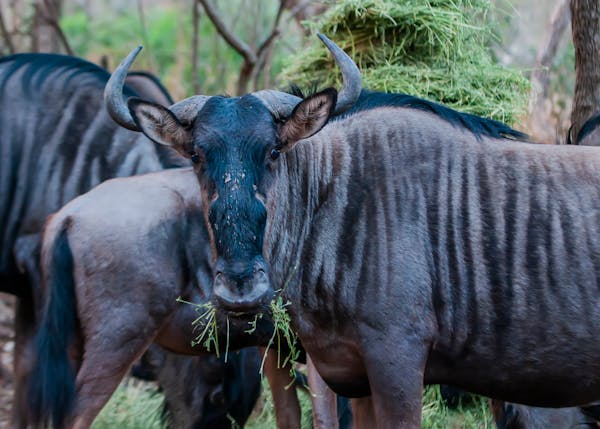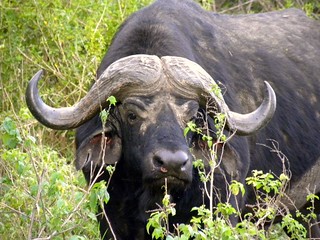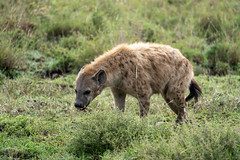Renowned for its stunning landscape and iconic Kilimanjaro Mountain, Kilimanjaro National Park is situated in Tanzania. Even though Kilimanjaro popularity in wildlife is not as famous as Serengeti National Park and Ngorongoro National Park for wildlife viewing, Kilimanjaro National Park also offer wildlife viewing.
However, the most popular activity at the park is climbing of Mountain Kilimanjaro. The mountain has the highest of the peak in the Africa and offers different trails. The park was established was established in 1973 and it is a UNESCO World Heritage Site. It covers an area of approximately 755 square kilometers and is majestically stand at 5,895 above the sea level. Spare time and pay a visit to this unique adventure in the heart of East Africa.
Biodiversity-Kilimanjaro popularity
One unique feature of Kilimanjaro National Park is its wildlife diversity. Even though not as popular as the other parks found in Tanzania like Ngorongoro and Serengeti for wildlife, Kilimanjaro offers unique wildlife that you might not find to the other parks.
Mammals-Kilimanjaro popularity
Kilimanjaro National Park is the home to various wildlife including Leopard, Buffalo and Elephant. Though, given the fact that the pack is on a higher altitude and limited by the vegetation, the density of bigger animals is constrained.
Birds-Kilimanjaro popularity
The park is the home to over 250 colorful bird species. They offer the bird enthusiast an experience to remember as they keep occupying the sky and they can be spotted as you are climbing the mountain or on vegetation visit. More birds fly in from Europe and North Africa during the rainy season to ran away from winter season. This makes the rainy season the perfect time for birdwatching.
Reptiles and Amphibians
On the lower slope of the park is where you can find Reptiles and Amphibians, including chameleons, geckos, and frogs, contributing to its overall ecological diversity. These features cannot leave on the higher altitude of the park but at the low altitude, they can be viewed. The park’s landscape is so diversified but at each level of landscape there is a life support that can habit in those environments and reptiles and amphibians can only live at the lower slope.
Conservation Efforts
In collaboration with UNESCO World Heritage and the local authority, the conservation efforts have been put in place to ensure that the wildlife and the mountain are protected. The money collected on the park entrance is used for these conservation efforts. These efforts include employing the local people to enable them to realize the importance of the conservation and avail them with an alternative source of income other than poaching and tree cutting.
Habitat Protection-Kilimanjaro popularity
Programs like anti-poaching programs, community conservation program and others have been put in place to ensure that the park diversity is protected. Some of these programs are funded by UNESCO and others by the Tanzanian government. Also permits are issued to the climbers and other tourist to ensure that wildlife habitats are not destroyed. With these efforts in place, we ensure the continuous existence of these animals for the future generation. Some animals are even imported to the park to ensure their continuous existence within the park. Several research is being conducted to see how these animals can continue existing in a continuously evolving climate.
Sustainable Tourism-Kilimanjaro popularity
Sustainable tourism involves that the visitors get the experience their money deserve without destroying the places they are visiting. Guides have been trained to ensure that they assist the tourist such that their presence does not greatly affect the park but still they the experience they have paid for.
Research and Monitoring
Scientific research and monitoring programs help assess the health of Kilimanjaro’s ecosystems and track changes in wildlife populations over time. These initiatives provide valuable data for conservation decision-making and inform management strategies.
Factors Contributing to Popularity
Several factors contribute to Kilimanjaro National Park’s popularity as a wildlife safari destination, despite its primary association with mountain trekking.
Unique Landscape-Kilimanjaro popularity
The park’s diverse landscapes, ranging from lush rainforests to barren alpine deserts, offer visitors a visually captivating backdrop for wildlife viewing. The juxtaposition of diverse habitats within proximity provides opportunities to encounter a variety of species.
Iconic Summit-Kilimanjaro popularity
Mount Kilimanjaro’s iconic status as Africa’s highest peak draws adventurers from around the globe. Many visitors to the park combine trekking expeditions with wildlife safaris, making it a multifaceted destination that caters to diverse interests.
Accessibility
Kilimanjaro National Park benefits from its proximity to major transportation hubs, including Kilimanjaro International Airport. This accessibility makes it a convenient starting point for safari adventures, particularly for travelers with limited time.
Cultural Significance
Beyond its natural beauty, Kilimanjaro holds cultural significance as a sacred site revered by local communities. Engaging with Maasai and Chagga cultural traditions adds depth to the safari experience, offering insights into Tanzania’s rich heritage.
Conservation Initiatives-Kilimanjaro popularity
The park’s commitment to conservation and sustainable tourism resonates with environmentally conscious travelers seeking authentic and ethical wildlife encounters. Supporting conservation efforts through visitation contributes to the long-term preservation of Kilimanjaro’s natural treasures.
Conclusion
In conclusion, while Kilimanjaro National Park may not be synonymous with traditional wildlife safaris, its unique blend of biodiversity, conservation efforts, and cultural heritage make it a compelling destination for adventurous travelers seeking immersive experiences beyond mountain climbing.
From the lush forests teeming with birdlife to the rugged slopes inhabited by elusive mammals, Kilimanjaro offers a safari experience unlike any other, where the thrill of discovery is matched only by the awe-inspiring grandeur of Africa’s tallest peak. As conservation efforts continue to safeguard its ecological integrity, Kilimanjaro National Park remains a beacon of hope for sustainable tourism and the preservation of our planet’s natural wonders.








